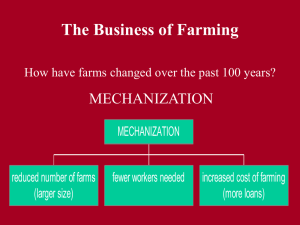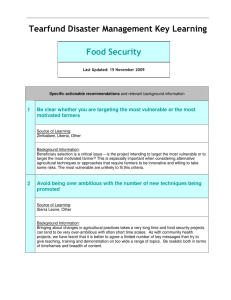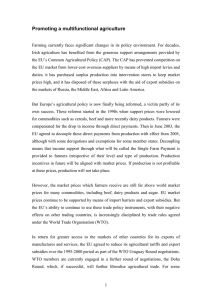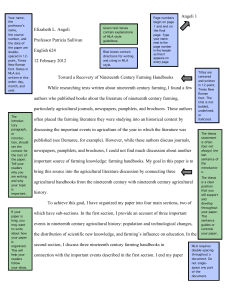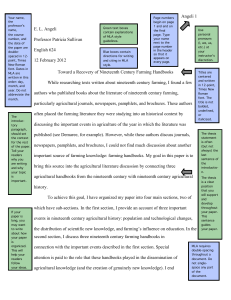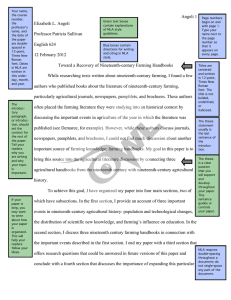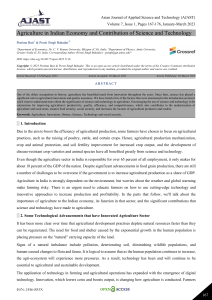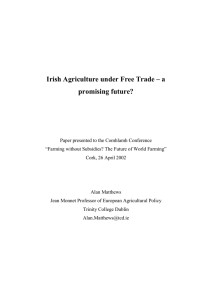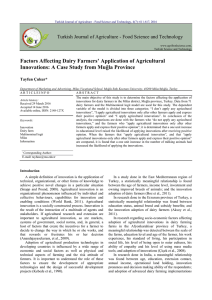CLF122
advertisement
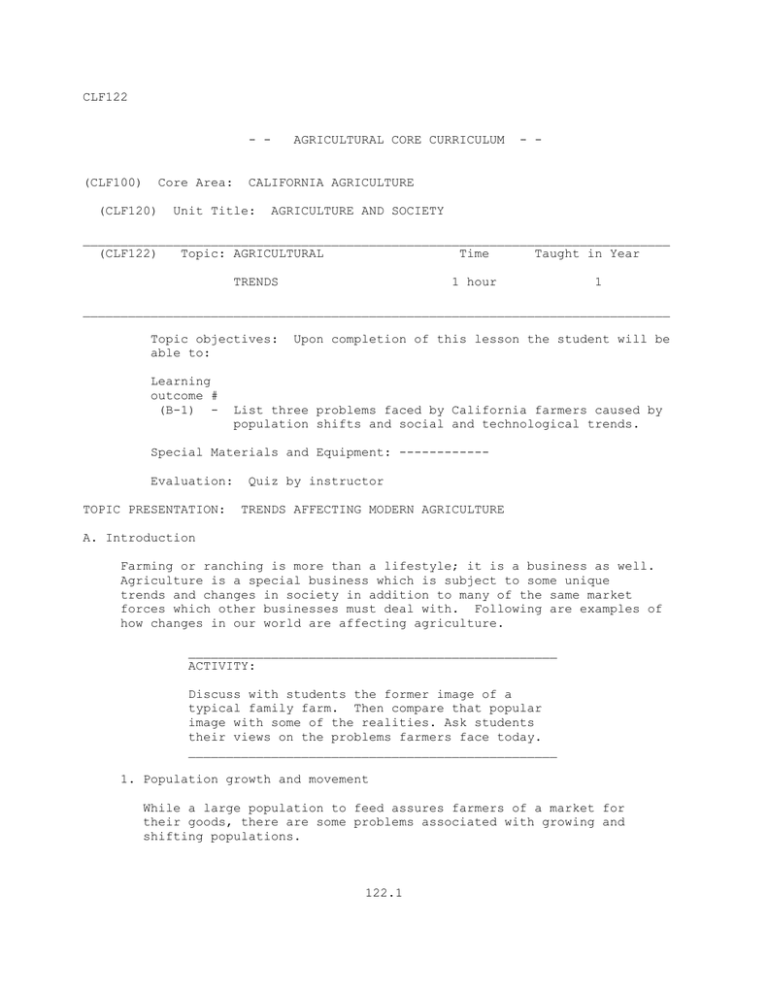
CLF122 - (CLF100) Core Area: (CLF120) AGRICULTURAL CORE CURRICULUM - - CALIFORNIA AGRICULTURE Unit Title: AGRICULTURE AND SOCIETY ______________________________________________________________________________ (CLF122) Topic: AGRICULTURAL Time Taught in Year TRENDS 1 hour 1 ______________________________________________________________________________ Topic objectives: able to: Learning outcome # (B-1) - Upon completion of this lesson the student will be List three problems faced by California farmers caused by population shifts and social and technological trends. Special Materials and Equipment: -----------Evaluation: TOPIC PRESENTATION: Quiz by instructor TRENDS AFFECTING MODERN AGRICULTURE A. Introduction Farming or ranching is more than a lifestyle; it is a business as well. Agriculture is a special business which is subject to some unique trends and changes in society in addition to many of the same market forces which other businesses must deal with. Following are examples of how changes in our world are affecting agriculture. _________________________________________________ ACTIVITY: Discuss with students the former image of a typical family farm. Then compare that popular image with some of the realities. Ask students their views on the problems farmers face today. _________________________________________________ 1. Population growth and movement While a large population to feed assures farmers of a market for their goods, there are some problems associated with growing and shifting populations. 122.1 a. People in growing urban and suburban areas compete with farmers for resources such as land and water. Land which is good for farming is often also suitable for building on. City and suburb residents can afford to pay more for the water they use than can most farmers. b. 1. The current United States population can be found on line @ www.census.gov/cgi-bin/popclock as of 9/1/00 the U.S. population was 275,785,234 and growing every 11 seconds. 2. The World population is said to grow by 1 billion in the next 10 years. As of 9/1/00 the world population was 6,097,884,335. Find the world population on line at www.ibiblio.org/lunarbin/worldpop Major land resources area's (MLRA) are threatened due to the effects of urban sprawl. The American Farmland Trust analyzes these effects and and makes projections accordingly. In the United States the greatest threat to American Farmland can be found here in California, the Sacramento and San Joaquin Valley. Additional information can be found at: http://www.farmlandinfo.org/cae/foe2/report/mlra17.html _________________________________________________ ACTIVITY: Using a population density map of California, discuss how population trends and shifts may affect agricultural production in each of the major commodity areas. Reference: American Farmland Trust www.Farmland.org _________________________________________________ 2. Social Changes Recent changes in social and cultural values and the resulting legislation have posed new challenges for agriculturalists. Some examples are: a. Heightened awareness and concern for the environment has brought many traditional farming practices under scrutiny. b. Legislation regarding use of foreign workers has affected the labor market which agricultural producers must deal with. c. The health awareness trend has cut down consumer consumption of beef, pork, wine and many processed meats. Correspondingly poultry and fresh vegetable sales have increased dramatically. Farmers must adapt to these social trends if they expect to survive. 122.2 3. Technical Advances New technology solves many problems for the farmer, but in the process can create new ones. Some examples: a. Labor-saving harvest machinery can speed harvest and save on labor costs, but the high capital outlaay often required and backlash from labor organizations can pose problems for growers. b. Computerized production processes can improve the efficiency of a farm, but the need for more technically competent labor and highly trained maintenance personnel makes the farmer less independent. c. Biological advances have helped to alter plant organisms to increase production, however these “GMO’s” (genetically modified organisms) have become a very controversial issue in the U.S. and abroad, especially in Europe where GMO’s are banned. 4. Biotechnology has improved plant production techniques by identifying disease and herbicide resistant genes. Genetic modification allows for more precise changes and improvements to plants than traditional plant breeding techniques. Corn and soybeans are the prevalent crops using biotechnology. ___________________________________________________ ACTIVITY: Application of bio-technology and gene splicing techniques have the potential to boost production, protect crops from frost, increase resistance to pests and reduce fertilizer requirements. Discuss with students the potential problems they think might result from the use of this new technology. Reference: The Ohio State University http://ohioline.ag.ohio-state.edu/gmo/faq.html ___________________________________________________ ___________________________________________________ ACTIVITY: Collect current articles from magazines and newspapers that will focus a discussion on current population trends. Utilize guest speakers from industry to discuss problems they have which relate to social and technical shifts. ___________________________________________________ 122.3

